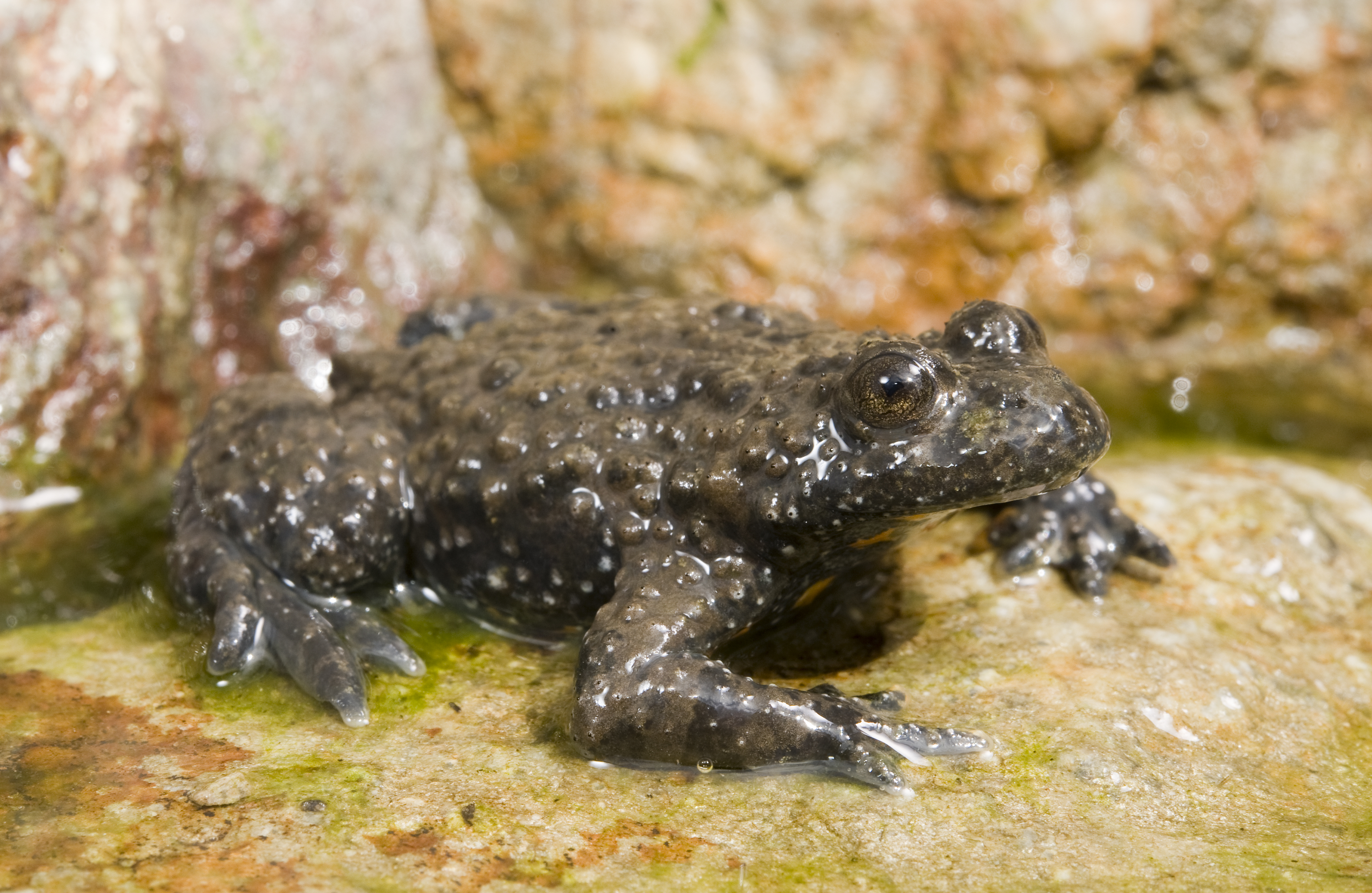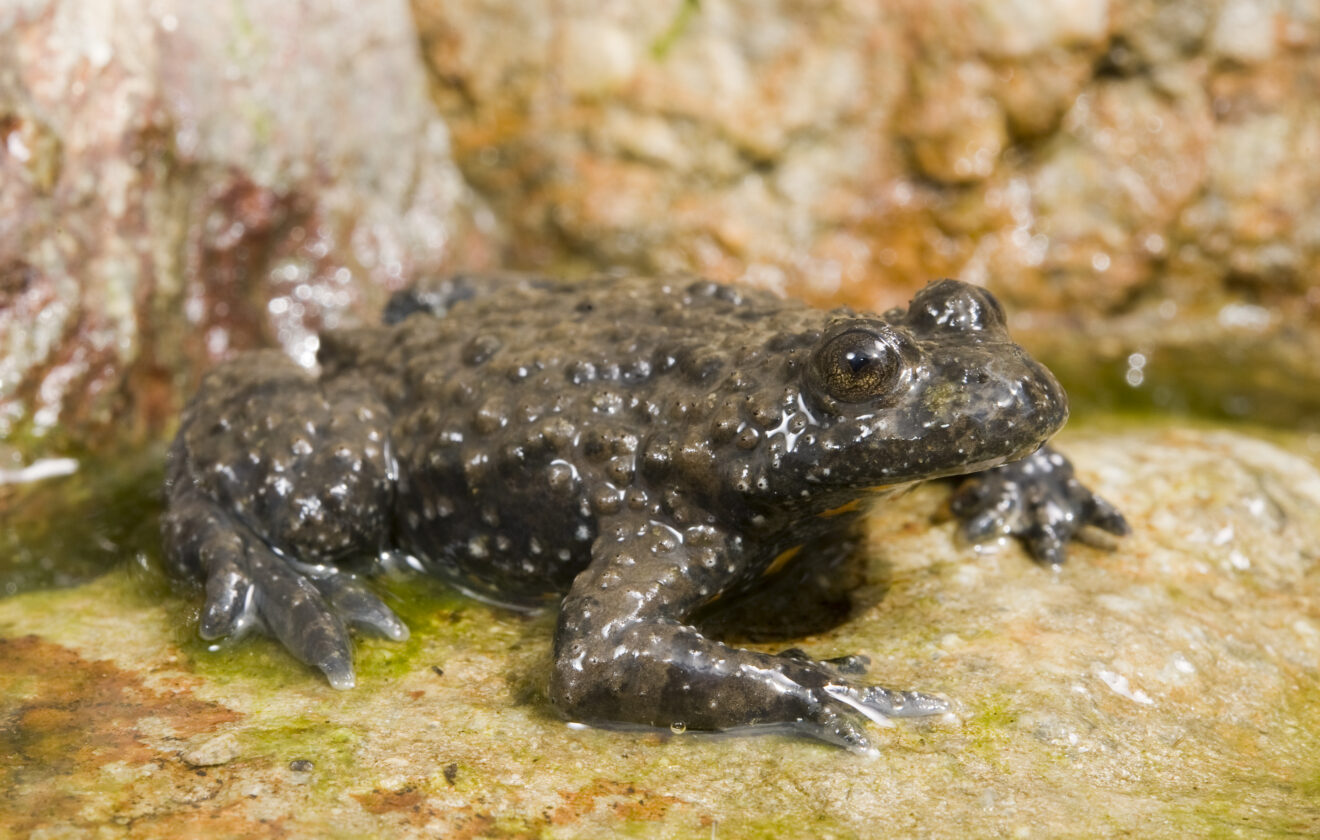- Exploring the Enchanting World of Bombina pachypus: Italy's Precious Apennine Yellow-bellied Toad
- Taxonomy and Classification
- Natural Habitat: Italy's Secluded Mountain Pools
- Physical Characteristics: Hidden Beauty in Bright Warning Colors
- Behavior and Life Cycle: Seasons by the Mountain Pools
- Ecological Role: Small Creature, Enormous Impact
- Threats and Conservation Status: Imperiled Treasure of the Apennines
- Cultural and Scientific Significance: Mysteries Beneath the Surface
- Conclusion: Celebrating and Conserving the Hidden Beauty of Bombina pachypus
Exploring the Enchanting World of Bombina pachypus: Italy’s Precious Apennine Yellow-bellied Toad#
The serene stillness of a hidden mountain pond in Italy is gently disturbed by a subtle movement. Beneath floating clusters of aquatic vegetation lurks a small amphibian whose remarkable existence fascinates summertime hikers and field naturalists alike—the Apennine yellow-bellied toad, scientifically named Bombina pachypus. Small yet captivating, this elusive amphibian carries an unmistakably vivid coloration contrast below its quiet appearance, epitomizing the beauty of the hidden wonders within Europe’s temperate ecosystems.
Often overshadowed by larger, conspicuously charismatic creatures, amphibians like Bombina pachypus serve critical roles within their environments and act as sensitive indicators for ecological health. Yet, despite their importance, this charming toad quietly faces an uncertain future amidst threats arising from human disturbance and environmental changes.
Join me as we journey into the life, habitat, and conservation narrative of one of Europe’s enigmatic amphibian jewel—the Apennine yellow-bellied toad.
Taxonomy and Classification#
Bombina pachypus belongs to the family Bombinatoridae, a distinct grouping within the order Anura. Within this family reside small, semi-aquatic amphibians recognized worldwide as fire-bellied toads, known for their brightly colored undersides and intriguing defense behaviors. Closely related species, such as Bombina variegata and Bombina bombina, share similar traits, habitats, and colorful bellies—flashes of color employed as defensive warnings.
Within this intriguing genus, the Apennine yellow-bellied toad stands unique, adapted specifically to the mountainous terrains and freshwater habitats
exclusive to its small geographic range in Italy. Genetic distinctions have confirmed this species’ uniqueness, leading conservationists to recognize its intrinsic value and urgency for protective measures.
Natural Habitat: Italy’s Secluded Mountain Pools#
The geographic distribution of Bombina pachypus is confined predominantly to the Apennine mountains of Italy, documenting a range that stretches from Liguria along the spine of Italy down to Calabria. Nestled within these picturesque elevations and verdant hillsides, the toad thrives in quiet freshwater pools, temporary ponds, and shallow streams. Terrain characterized by rocky substrates and abundant aquatic flora create ideal shelters for this amphibian, providing both refuge from predators and ample opportunities to feed.
A diverse array of habitats, including alpine meadows, beech forests, and agricultural lands, intersect within this territory, creating mosaic ecosystems ideal for amphibians. With these mixed habitats, seasonal rainfall patterns play a vital part. Temporary pools formed after rainfall and snowmelt events offer ideal breeding grounds, free of aquatic predators such as fish, which cannot survive the periodic drying of these habitats. Thus, these ephemeral waters symbolize both home and safe haven for young toadlets and larvae alike.
It is precisely this reliance on temporary aquatic habitats and the ecology of seasonal waters that makes Bombina pachypus a sensitive indicator species, constantly reflecting the subtle impacts of environmental change experienced throughout its delicate ecosystem.
Physical Characteristics: Hidden Beauty in Bright Warning Colors#
A cursory glance may leave observers overlooking the modestly colored upper surfaces of the Apennine yellow-bellied toad—but as any seasoned naturalist knows, many amphibians have secrets to reveal. Upon closer examination, Bombina pachypus reveals captivating beauty beneath its quiet exterior. Generally small, usually measuring only 3 to 6 centimeters in length, its upper skin features a rough texture with subtle coloration. Earthy hues of olive, gray, and brown allow the creature to blend seamlessly into the surroundings, providing essential camouflage to evade birds and snakes.
The true spectacle becomes evident upon closer inspection or when the amphibian feels threatened—at this moment, the creature adopts a unique defensive behavior known as the “unken reflex,” arching its back, extending limbs upwards dramatically to expose their vibrant yellow bellies. This spectacular vivid underside, painted boldly with black-blue markings atop bright yellow-orange backgrounds, serves as a stark warning to would-be predators. Such brilliant coloration is not mere whimsy but an adaptive advantage derived through evolutionary selection, providing a highly effective form of aposematism that signals the presence of mildly toxic skin secretions and deters predation attempts.
The skin itself secretes irritating chemicals that discourage consumption by predators, further enhancing their survivability. Each visual trait and chemical adaptation woven together forms the intricate tapestry of survival strategies embedded within the biology of this striking species.
Behavior and Life Cycle: Seasons by the Mountain Pools#
The life of the Apennine yellow-bellied toad revolves closely around seasonal water patterns. As warm spring showers fall upon the misty mountain slopes, males awaken from their chilly winter hibernation within leaf litter, rocky fissures, or sheltered crevices beneath logs and stones. Energized by increasing temperatures and moisture, these males congregate at shallow pools, their gentle yet persistent calls resonating through quiet valleys and forest clearings.
The breeding call—a soft, melodious “oop…oop…oop” repeated rhythmically—acts as a beacon to females. With courtship underway, mating occurs in typical amplexus fashion; males clasp females securely, fertilizing eggs as they’re laid among submerged foliage, branches, or stones. Females lay eggs in small clusters, carefully dispersed within the confines of their shallow pond nurseries.
After several days, tiny tadpoles emerge, equipped with rapid growth adaptations as they race against the clock of drying ponds and oncoming summer heat. Their diet consists primarily of algae, microorganisms, and organic detritus found abundantly in temporary pools. Transformation from tadpole to juvenile toad occurs rapidly—just a few weeks later, miniaturistic versions of the adults carefully enter terrestrial habitats to begin a life of concealment and predator evasion.
As dusk descends during the warm summer months, adults embark upon their foraging endeavors, hunting small insects, worms, and arthropods from the damp forest floors. Although primarily nocturnal and discreet in habit, these amphibians play an invaluable ecological role, controlling insect populations and serving as prey for birds and reptiles, balancing the delicate circle of life.
Ecological Role: Small Creature, Enormous Impact#
Amphibians like Bombina pachypus fill essential niches within ecosystems, roles that belie their diminutive stature. By preying on insects and small invertebrates, these toads help regulate insect populations, reducing the risk of outbreaks that could negatively impact plant communities and overall biodiversity.
Conversely, amphibians themselves provide vital food sources for numerous predators, including snakes, birds, and mammals, enabling energy transfer within the broader food web. Furthermore, amphibian species often indicate environmental health. The Apennine yellow-bellied toad, in particular, reacts sensitively to habitat disturbances, making this species a critical bio-indicator for conservationists keen on assessing habitat integrity and ecological resilience.
Threats and Conservation Status: Imperiled Treasure of the Apennines#
Unfortunately, like many amphibians worldwide, Bombina pachypus faces increasing threats that jeopardize its survival. Major issues include habitat destruction, fragmentation, pollution of aquatic ecosystems, agricultural intensification, and susceptibility to deadly pathogens such as chytrid fungus. Climate change presents yet another danger, upsetting careful breeding rhythms by altering precipitation patterns and creating abnormal droughts or floods.
The International Union for Conservation of Nature (IUCN) classifies Bombina pachypus as Endangered. To address these alarming concerns, conservationists in Italy have initiated habitat protection programs, created breeding ponds within suitable ecological settings, and implemented disease-monitoring protocols aimed at mitigating declines.
Cultural and Scientific Significance: Mysteries Beneath the Surface#
The Apennine yellow-bellied toad is more than a curious amphibian—it reflects a deeper cultural appreciation among local communities in Italy where natural habitats form integral parts of regional identities. Indeed, amphibians in folklore may symbolize renewal, transformation, and environmental balance, embodying nature’s sustained connection with human tradition.
From a scientific perspective, Bombina pachypus presents an exciting area of study, particularly regarding amphibian toxicologies, ecological adaptations, and implications for broader conservation practices.
Conclusion: Celebrating and Conserving the Hidden Beauty of Bombina pachypus#
The Apennine yellow-bellied toad epitomizes all reasons we treasure wildlife: its ecological value, hidden beauty, captivating habits, and subtle signals of environmental health. By understanding its intricate life, supporting conservation initiatives, and appreciating amphibians’ significance, we can ensure future generations experience the quiet wonder of Italy’s hidden jewel—Bombina pachypus.
Only together can we champion its preservation, safeguarding its delicate story for years to come.















